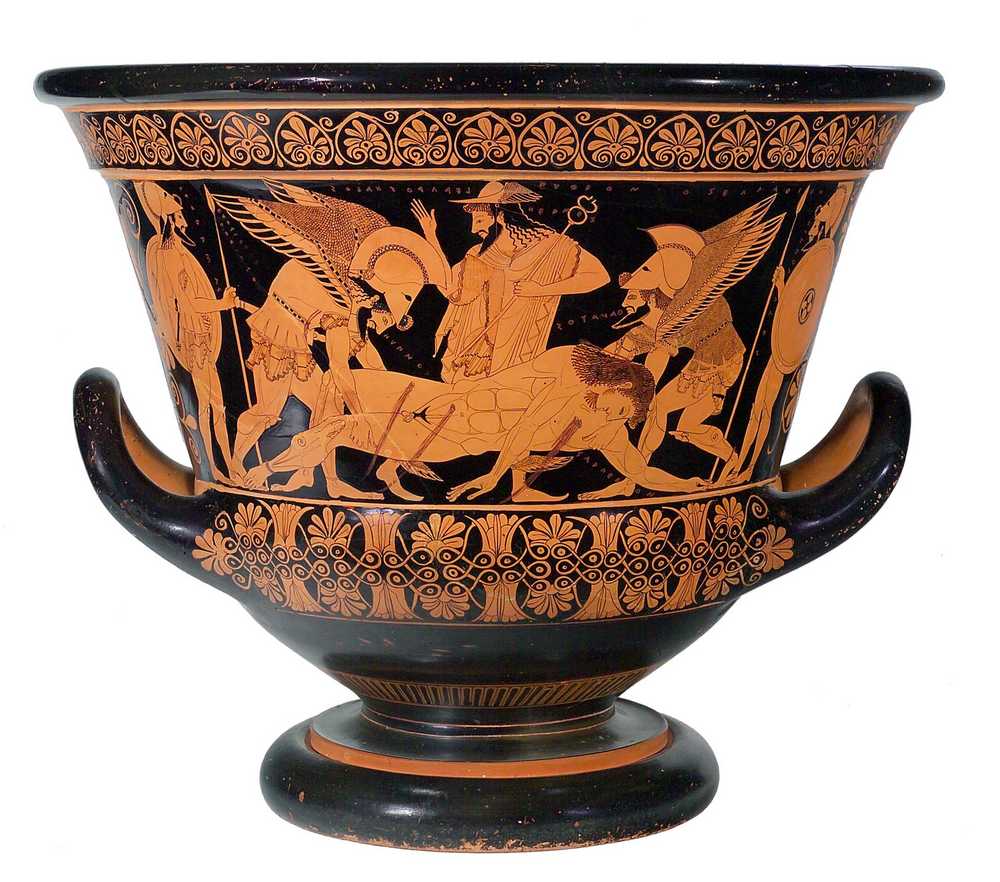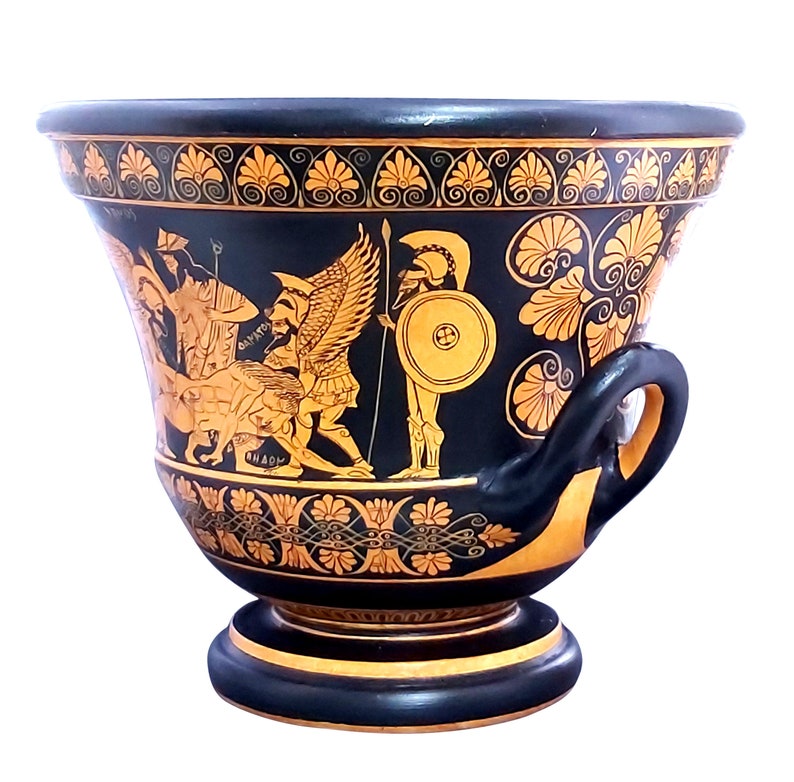

Apart from anything else, it would be well-nigh impossible to make an adjustment to such a cord, using only one hand.

While it's possible to confuse what Hyperochos is doing with his right hand, I have to challenge that he is adjusting the cord that binds his hair, which is already knotted at the back of his head, with the bow clearly visible.

He says of the figure named as Hyperochos that he "holds a short sword in his left hand with his right hand, he adjusts a long ribbon tied around his head". If he was going to take so little interest, he might have done better to say nothing at all, and stick with the "A" side. While he has very little to say about it, much of what he does say is wrong. All packages include tracking numbers.Although it's possible to dispute most of his conjectures about the Sarpedon Krater's origins and history up to its sequestration, my main gripe with Nigel Spivey's account is in his treatment of what he refers to as the "B" side of the krater. We ship worldwide from Greece, 12-48 hours after payment (doesn't include Sat, Sun or holidays), via Greek Postal Service for all international packages. Professional packing - We take extra care in safely packing our fragile items to ensure safe delivery. While the subject of Sarpedon's death might normally be depicted as a stylized tableau, the figures in this scene are painted in naturalistic poses and with schematic, but accurate anatomy. In the scene of Sarpedon's death, the god Hermes directs the personifications of Sleep (Hypnos) and Death (Thanatos) to carry the fallen away to his homeland for burial. The reverse of the krater shows a contemporary scene of Athenian youths from the sixth century BC arming themselves before battle. An episode from the Trojan War is shown on the obverse this illustration depicts the death of Sarpedon, son of Zeus and Laodamia. The style of the vase is red-figure pottery.The krater is decorated with two scenes.

Our vase is a copy of the famous ancient Greek terra cotta calyx-krater known as «The Euphronios Krater (or Sarpedon krater)» (515 BC), which is exhibited in the Archaeological Museum of Cerveteri in Italy.


 0 kommentar(er)
0 kommentar(er)
